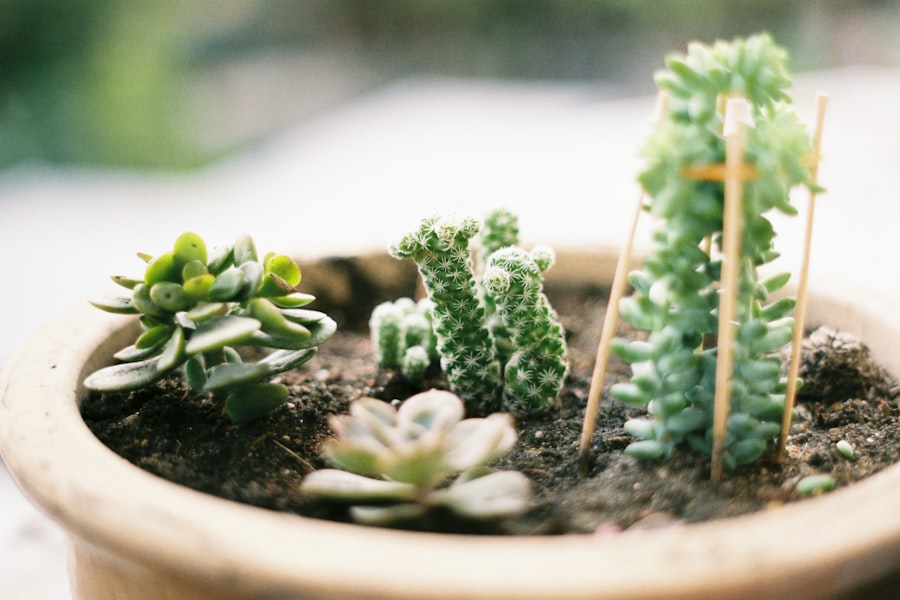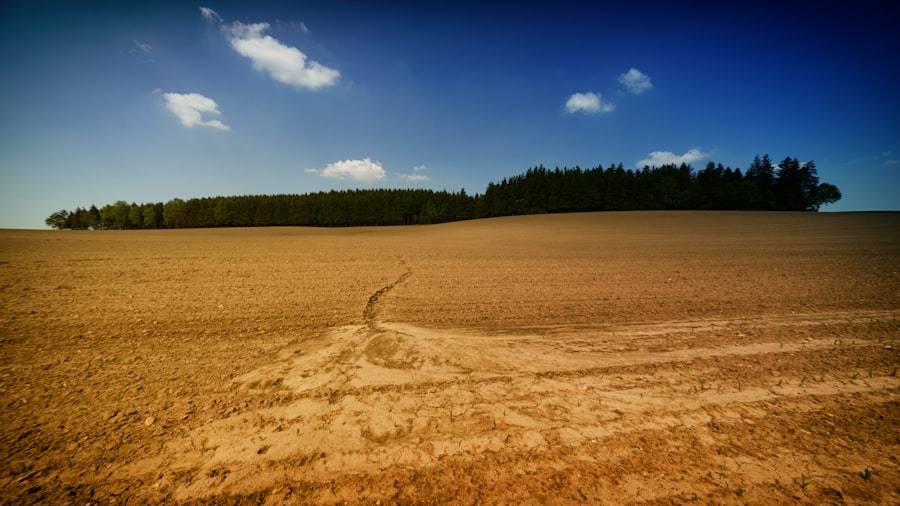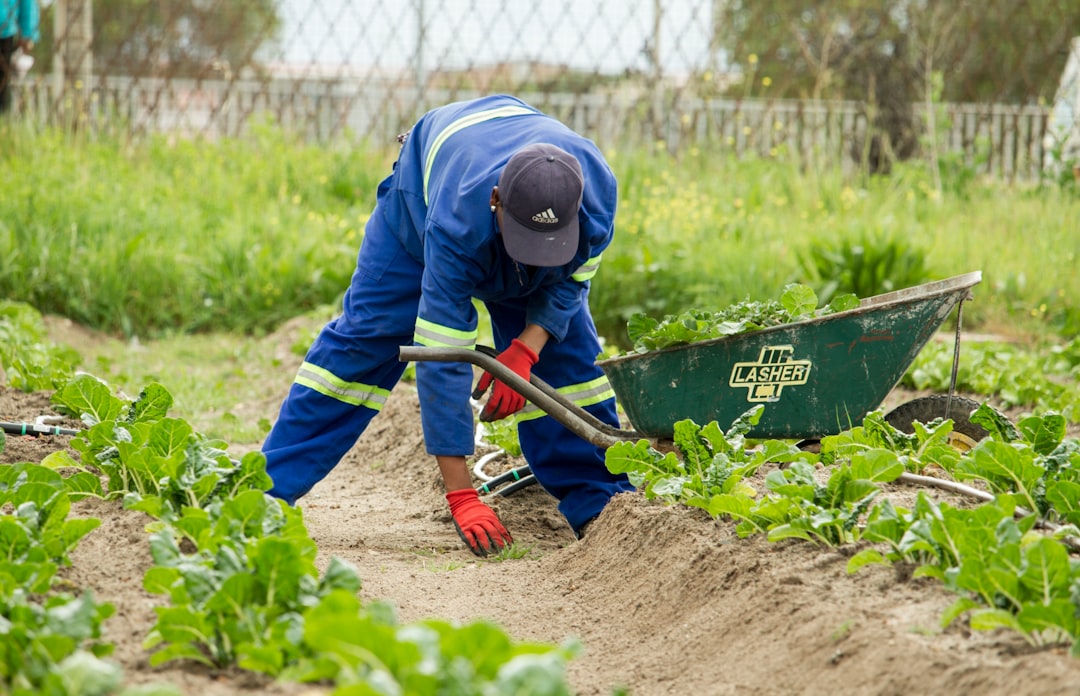Loam soil is often heralded as the ideal soil type for gardening and agricultural practices due to its balanced composition and favorable properties. It is a mixture of sand, silt, and clay, which allows it to retain moisture while also providing excellent drainage. This unique combination makes loam soil particularly versatile, supporting a wide variety of plants and crops.
The term “loam” itself is derived from the Old English word “lam,” which means “to mix,” reflecting the soil’s composite nature. Understanding loam soil is crucial for gardeners and farmers alike, as it serves as the foundation for healthy plant growth. The significance of loam soil extends beyond its physical properties; it plays a vital role in the ecosystem.
Loam supports a diverse range of microorganisms, earthworms, and other beneficial organisms that contribute to soil health. These organisms help decompose organic matter, recycle nutrients, and improve soil structure. As a result, loam soil not only provides a nurturing environment for plants but also fosters a thriving ecosystem that enhances biodiversity.
This intricate relationship between loam soil and the organisms it supports underscores its importance in sustainable gardening and agriculture.
Key Takeaways
- Loam soil is a balanced combination of sand, silt, and clay, making it ideal for gardening.
- The composition of loam soil includes 40% sand, 40% silt, and 20% clay, providing good drainage and nutrient retention.
- Characteristics of loam soil include its ability to retain moisture, provide good aeration, and support healthy root growth.
- Loam soil is important in gardening as it promotes healthy plant growth and provides a stable foundation for plants to thrive.
- The key difference between loam soil and topsoil is that topsoil refers to the uppermost layer of soil, while loam soil is a specific type of soil with balanced composition.
Composition of Loam Soil
Loam soil is characterized by its balanced composition of three primary components: sand, silt, and clay. Typically, loam consists of approximately 40% sand, 40% silt, and 20% clay. This specific ratio allows loam to exhibit the beneficial properties of each component while minimizing their individual drawbacks.
Sand particles are larger and provide excellent drainage, preventing waterlogging that can suffocate plant roots. Silt particles are smaller and contribute to moisture retention, ensuring that plants have access to the water they need for growth. Clay particles, while small and dense, help bind the soil together, enhancing its structure and nutrient-holding capacity.
The organic matter content in loam soil is another critical aspect of its composition. Organic matter includes decomposed plant material, animal waste, and microorganisms that enrich the soil with nutrients. This organic component not only improves soil fertility but also enhances its ability to retain moisture and support microbial life.
The presence of organic matter in loam soil contributes to its dark color and crumbly texture, making it visually appealing and easy to work with. The interplay between these components creates a dynamic environment that supports healthy plant growth and promotes sustainable gardening practices.
Characteristics of Loam Soil

Loam soil possesses several key characteristics that make it highly desirable for gardening and agricultural applications. One of its most notable features is its excellent drainage capability. The sandy component allows excess water to flow through the soil easily, preventing waterlogging that can lead to root rot and other plant diseases.
At the same time, the silt and clay components help retain moisture, ensuring that plants have access to water during dry periods. This balance between drainage and moisture retention is what makes loam soil so effective for a wide range of plants. Another important characteristic of loam soil is its nutrient-holding capacity.
The clay particles in loam have a high cation exchange capacity (CEC), which means they can hold onto essential nutrients such as potassium, calcium, and magnesium. This property allows loam soil to provide a steady supply of nutrients to plants over time, reducing the need for frequent fertilization. Additionally, the presence of organic matter enhances nutrient availability by promoting microbial activity that breaks down complex compounds into forms that plants can readily absorb.
This nutrient-rich environment fosters robust plant growth and contributes to overall garden health.
Importance of Loam Soil in Gardening
The importance of loam soil in gardening cannot be overstated. Its balanced composition makes it suitable for a wide variety of plants, from vegetables to ornamental flowers. Gardeners often seek out loam soil for its ability to support healthy root development, which is crucial for plant stability and nutrient uptake.
The crumbly texture of loam allows roots to penetrate easily while providing adequate aeration, ensuring that plants can access both water and oxygen efficiently. Moreover, loam soil’s ability to retain moisture while allowing for proper drainage makes it an ideal choice for gardeners in various climates. In regions with heavy rainfall, loam can prevent waterlogging by facilitating drainage, while in drier areas, it retains enough moisture to sustain plants during dry spells.
This adaptability makes loam soil a favorite among gardeners who want to cultivate diverse plant species without constantly worrying about soil conditions. Additionally, the rich organic matter found in loam enhances soil fertility, reducing the need for synthetic fertilizers and promoting sustainable gardening practices.
The Difference Between Loam and Topsoil
While both loam and topsoil are essential components of healthy gardening practices, they are not synonymous. Topsoil refers specifically to the uppermost layer of soil that is rich in organic matter and nutrients, typically found at a depth of 5 to 10 inches. It is the layer where most plant roots grow and where organic activity is most pronounced.
In contrast, loam is a specific type of soil texture characterized by its balanced mixture of sand, silt, and clay.
While topsoil can be composed of various textures—including sandy, clayey, or silty—loam specifically denotes a balanced mixture that provides optimal conditions for plant growth. Another key difference lies in their usage in gardening and agriculture.
Topsoil is often used as a top dressing or amendment to improve existing soils or create new planting beds. It is typically sold in bulk or bags at garden centers and is essential for establishing new gardens or enhancing existing ones. On the other hand, loam is often sought after as a primary growing medium due to its ideal texture and nutrient-holding capacity.
Understanding these distinctions helps gardeners make informed decisions about soil selection and management practices.
Composition of Topsoil

Topsoil is primarily composed of organic matter, minerals, air, and water. The organic matter component includes decomposed plant material, microorganisms, and animal waste that enrich the soil with nutrients essential for plant growth. Typically, topsoil contains a higher concentration of organic matter compared to deeper layers of soil, making it fertile and conducive to supporting plant life.
The mineral content in topsoil varies depending on the geographical location but generally includes sand, silt, clay, and various minerals that contribute to its overall structure. The composition of topsoil can also be influenced by human activities such as farming practices, landscaping efforts, and urban development. For instance, topsoil may be enriched with compost or other organic amendments to enhance its fertility further.
However, it is important to note that not all topsoil is created equal; some may be more nutrient-rich than others based on local conditions and management practices. Understanding the composition of topsoil is crucial for gardeners looking to improve their planting medium or establish new gardens.
Characteristics of Topsoil
Topsoil exhibits several characteristics that make it vital for gardening and agricultural practices. One of its defining features is its rich organic content, which contributes to its dark color and crumbly texture. This organic matter not only provides essential nutrients but also improves soil structure by promoting aeration and water retention.
The presence of microorganisms within topsoil further enhances its fertility by breaking down organic materials into forms that plants can readily absorb. Another characteristic of topsoil is its variability in texture and composition across different regions. Depending on local geology and climate conditions, topsoil can range from sandy to clayey or silty in texture.
This variability affects how well topsoil drains water and retains moisture—factors that are critical for successful gardening. Gardeners must consider these characteristics when selecting topsoil for their gardens or when amending existing soils to ensure optimal growing conditions for their plants.
Uses of Topsoil in Gardening
Topsoil serves multiple purposes in gardening that contribute to successful plant growth and overall garden health. One primary use is as a planting medium for new gardens or flower beds. When establishing a garden from scratch, gardeners often spread a layer of topsoil over the existing ground to create a fertile base for planting seeds or transplants.
This practice ensures that plants have access to essential nutrients right from the start. In addition to serving as a planting medium, topsoil can also be used as an amendment to improve existing soils. Gardeners may incorporate topsoil into sandy or clay-heavy soils to enhance their structure and fertility.
By mixing topsoil with native soils, gardeners can create a more balanced growing environment that supports healthy root development and improves moisture retention capabilities. Furthermore, topsoil can be used as a top dressing around established plants to provide additional nutrients over time while suppressing weeds.
Comparing Loam Soil and Topsoil
When comparing loam soil and topsoil, it becomes evident that each has unique attributes suited for different gardening needs. Loam soil is defined by its specific texture—a balanced mixture of sand, silt, and clay—making it ideal for supporting diverse plant species due to its excellent drainage capabilities combined with moisture retention properties. In contrast, topsoil refers more broadly to the uppermost layer of soil rich in organic matter but can vary significantly in texture depending on local conditions.
Another point of comparison lies in their applications within gardening practices. Loam is often sought after as an ideal growing medium due to its inherent qualities that promote healthy plant growth without requiring extensive amendments. Conversely, topsoil serves as an essential resource for improving existing soils or establishing new gardens by providing a nutrient-rich layer where plants can thrive.
Understanding these differences allows gardeners to make informed choices about which type of soil best meets their specific needs.
Choosing the Right Soil for Your Garden
Selecting the right soil for your garden involves considering several factors including plant types, local climate conditions, and existing soil quality. For instance, if you are planning to grow vegetables or flowering plants that require well-drained yet moisture-retentive conditions, loam would be an excellent choice due to its balanced composition. On the other hand, if you are working with poor-quality native soils or establishing new garden beds from scratch, incorporating high-quality topsoil may be necessary to create an optimal growing environment.
Additionally, understanding your garden’s specific needs can guide your decision-making process when choosing between loam and topsoil. Conducting a simple soil test can provide valuable insights into pH levels, nutrient content, and texture—information that will help you determine whether you need to amend your existing soil or start fresh with new topsoil or loam mixtures tailored to your plants’ requirements.
Tips for Improving Soil Quality in Your Garden
Improving soil quality in your garden is essential for fostering healthy plant growth and maximizing yields over time. One effective method is through the addition of organic matter such as compost or well-rotted manure. These materials not only enrich the soil with nutrients but also enhance its structure by promoting aeration and moisture retention capabilities—key factors for successful gardening.
Another tip involves practicing crop rotation or cover cropping techniques that help maintain soil health over time by preventing nutrient depletion and reducing pest pressures within your garden ecosystem.
By alternating different crops each season or planting cover crops during fallow periods, you can improve overall soil fertility while minimizing reliance on synthetic fertilizers or pesticides.
Regular mulching around established plants can also contribute positively towards improving overall soil quality by suppressing weeds while retaining moisture levels within the root zone—creating an ideal environment for healthy growth throughout various seasons.
By implementing these strategies consistently over time while monitoring changes within your garden ecosystem closely—gardeners can cultivate rich fertile soils capable of supporting vibrant flourishing landscapes year after year!
If you are interested in learning more about soil health and plant diseases, you may want to check out this article on Fighting Fusarium Wilt: Understanding and Managing the Disease. Understanding how to identify and prevent diseases like Fusarium wilt can help you maintain a healthy garden. Additionally, if you are looking to grow tomatoes, you may find this article on When Are Tomatoes Harvested: A Complete Growing Guide helpful. And if you are interested in adding new plants to your garden, you may want to learn more about the beautiful Esperanza plant in this article.
FAQs
What is loam soil?
Loam soil is a type of soil that is a balanced mixture of sand, silt, and clay. It is considered to be the ideal soil type for gardening and agriculture due to its ability to retain moisture, drain well, and provide a good environment for plant roots.
What is the difference between loam and topsoil?
Loam soil refers to a specific soil type that contains a balanced mixture of sand, silt, and clay, while topsoil refers to the uppermost layer of soil, which can be of various types including loam, clay, or sand. In other words, loam is a type of soil, while topsoil is a layer of soil that can contain different soil types.

